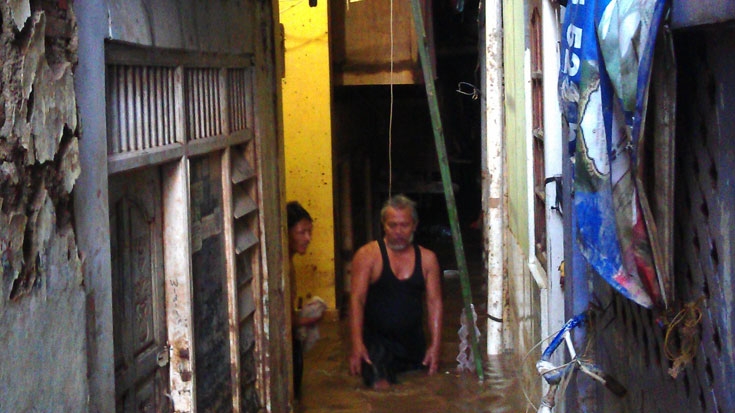Challenge
A far-flung archipelago sitting on a ‘Ring of Fire’ of active volcanoes, Indonesia is prone to natural disasters, and their severe impact on the country will increase if it does not improve its disaster risk management systems. This is due to the following factors:
- Insufficient investment in prevention and risk reduction of disasters, which includes a lack of systems that can identify risks and would manage post-disaster reconstruction efforts;
- Inexperienced DRM institutions at the national and sub-national level, many of which are newly established. Since its launch in 2008, the National Agency for Disaster Management has yet to sufficiently train and equip the majority of its subsidiaries -- 392 out of 497 disaster management agencies at the municipal and sub-district level still lack adequate capacity.
- The absence of a comprehensive framework for risk financing, resulting in high costs, inefficiencies, and misuse when post-disaster rehabilitation begins.
Solution
The Bank tackles Indonesia’s considerable challenges in disaster risk management by leveraging existing engagements and financing instruments, as well as its access to international best practices. One successful approach actively involves communities in both prevention and reconstruction efforts, so that communities help in providing data and mapping in the event of disaster. For example, the use by communities of InaSAFE (Indonesia Scenario Assessment for Emergencies), a free software program that produces realistic natural-hazard impact scenarios for better planning, preparedness, and response activities. Also, the success of community-based settlement rehabilitation, or Rekompak, has prompted the Government of Indonesia to adopt its template for nationwide community housing.
Communities are also involved in the Safe School program, whereby the rehabilitation of schools damaged by disasters uses special allocation funds, capital investment and disaster preparedness schemes. The Bank also provides technical assistance to Indonesia’s efforts to boost disaster risk financing and insurance.
Results
The World Bank’s interventions in disaster risk management have received national and regional recognition:
- In Jakarta, participatory mapping exercises since 2012 have led to the mapping of 6000 structures and 2,668 neighborhood units -- mapping that provide more accurate information, particularly for developing disaster contingency plans.
- Jakarta has been proactive in disaster risk mitigation, but other cities are likely to follow suit: six mid-sized municipalities are now taking part in the Bank’s Disaster and Climate Risk Review.
- The Safe Schools program has rehabilitated some 180 schools in 3 provinces, 6 cities, and 6 sub-districts in 2012.
- After winning the Black Duck Open Source Software Award in 2012, the InaSAFE (Indonesia Scenario Assessment for Emergencies) approach was adopted in the Philippines, Sri Lanka, Pakistan, and Malawi. The strategy is to involve communities in disaster risk mitigation.
As of February 2014, some 16 urban wards and 4 cities prone to natural disasters - earthquakes, flooding and landslides - are incorporating DRM into their community-driven development programs.
The close partnership between the Bank’s DRM team and the National Disaster Management Agency continues to strengthen. But other government institutions are also attempting to mainstream disaster resilience, with the Ministry of Finance drafting a decree on natural disaster insurance.

